
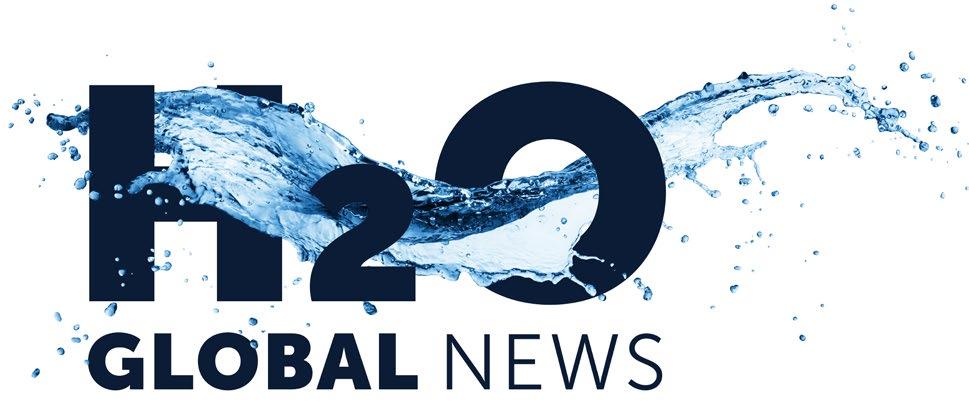
January 2023 Issue 4 MAGAZINE
in food security Trends, Innovations, and Entrepreneurs Smart Irrigation Doing more with less Mobilising Finance Investors perspectives Remote Monitoring Eyes in the skies
Watertech’s role

Contact us at: info@mazarineventures.com
IN INNOVATIONS TO TACKLE WATER RISK IN FOOD PRODUCTION Join our investor syndicate to back technology innovations that support agriculture and aquaculture adapt to an uncertain water future. TECHNOLOGY INNOVATIONS
INVESTING
Hello and welcome to our quarterly issue magazine, where you can discover the best the global water industry has to offer - all in one place.
Firstly I’d like to thank all our readers, partners and stakeholders for their continued support and commitment to our publication and the industry as a whole.
As H2O Global News grows from strength to strength, we look forward to consolidating our existing collaborations, forming new ones and doubling-down on our commitment to offer quality, though-provoking editorial from the cutting-edge of the water industry.




The focus of this month’s edition is watertech’s role in food security.


Agriculture accounts for about 70% of global water withdrawals, but as water becomes increasingly scarce, the agricultural industry is having to come up with new ways to do more with less. Here’s where the water sector comes in.
Watertech has huge potential to reduce the sector’s water use while still maintaining a reliable and quality food supply.
In this H2O Global News quarterly issue magazine, we will focus on the companies, startups and initiatives developing and implementing watertech solutions for agriculture.
Our aim is to showcase the multitude of technologies and approaches that exist today that help make the world’s most water-intensive sector more sustainable.
This magazine features exclusive interviews with prominent agtech and watertech entrepreneurs, insights from investors and indepth analysis on current trends and approaches to building a more water-wise agricultural industry.

Siôn Geschwindt

Editor
Publisher

FOLLOW

1 H 2 O GLOBAL NEWS MAGAZINE January 2023 Issue 4
H2O ON @h2oglobalnews Partners
Abby Davey abby@h2oglobalnews.com Editor Sion Geschwindt sion@h2oglobalnews.com Creative Director Louise Davey louise@bluemantamedia.com Advertising +44
H2O Global News delivers news from around the world covering the Drinking/Potable Water, Hydropower and Wastewater industries incorporating technology, companies,
the environment and case
The
News Magazine is published
year (Spring,
by Blue
Global News t/a Blue
used utmost care to ensure and
accuracy,
and
published on this site. We,
Happy reading! responsibility for
(0)7817 105 258 marketing@h2oglobalnews.com
legislation,
studies.
H2O Global
four times a
Summer, Autumn and Winter)
Manta Media Limited, Buckinghamshire, England, UK. H2O
Manta Media Limited has
maintain the
completeness
currency of information
however, take no
any errors or omission, though if notified of any we will endeavour to rectify such.
Global Water Works SWAN Water Mission Future Water Association Responsible Flushing Alliance
Editor’s note

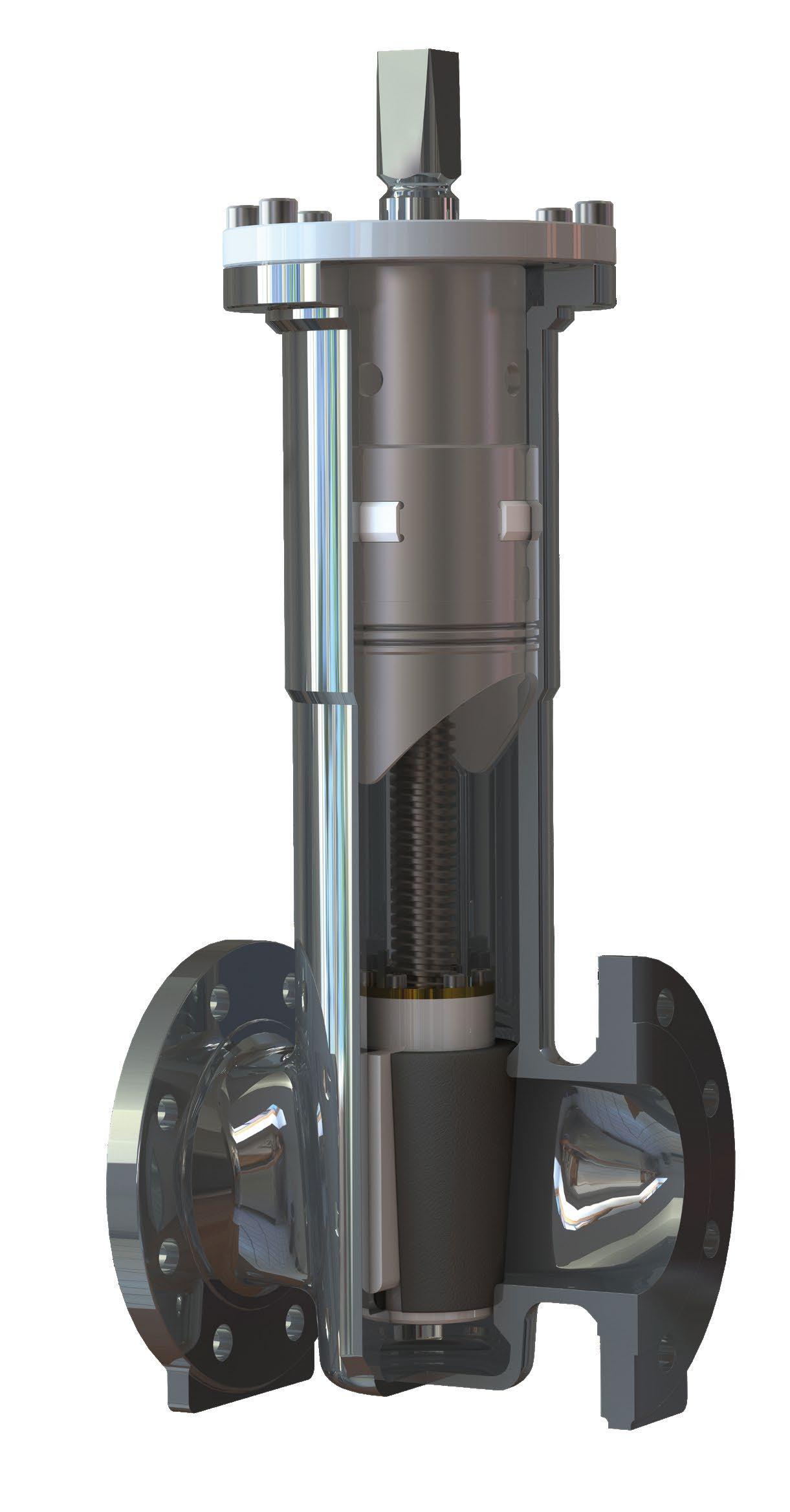
THE IVAPPS BODY KNOWN AS THE PORTAL , ACCOMMODATES BOTH THE SMART CARTRIDGES AND VALVE CARTRIDGE OFFERING A UNIQUE SUSTAINABLE SOLUTION TO FLUID SYSTEM MONITORING, SUCH AS POWER OPTIMISATION, PRESSURE MODULATION AND LEAK DETECTION. ENABLING DIGITAL FLOW ivappsTech.com





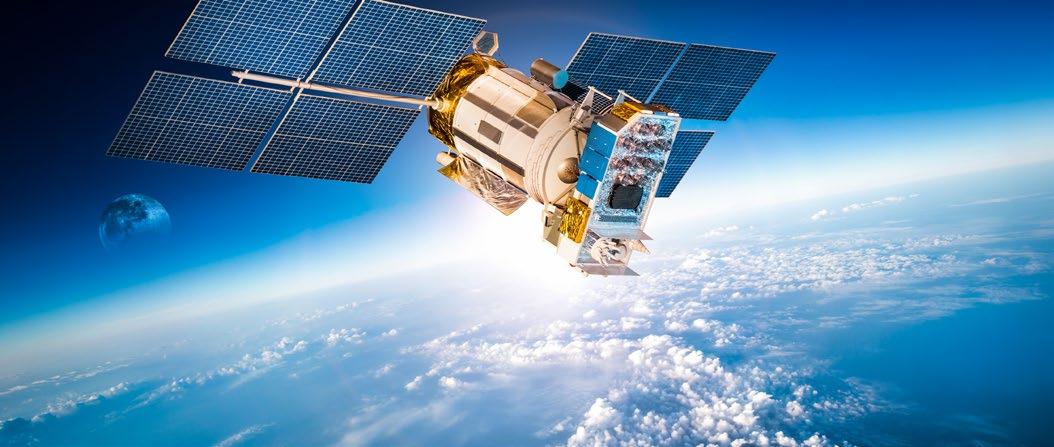



3 4-5. 11. 18. 14. Contents 6-8. 10. 16. Global events p.24-25 Features p.4-23 4-5 Water is key to food security 6-8 The water footprint of food 9 Subirrigation using treated wastewater 10 The role of watertech 11 Water innovations for agriculture 12-13 Agrinoze develops system for automated, precision irrigation 14-15 How are technology investors approaching water-tech’s role in global food security? 16-17 Constellr pioneers ‘world’s first’ satel lite-based water monitoring system for crops 18-19 Leveraging finance for climate-smart agriculture 20 Smart irrigation technology: Less water, less cost 21 Ensuring irrigation water is safe and fit-for-purpose 22 Remote metering for the agricultural sector 23 Q&A with Duperon
Water is key to food security
Agriculture accounts for around 70% of all freshwater withdrawals globally. Whether it’s irrigating and cooling crops, supporting livestock or providing frost control, it goes without saying that water is the lifeblood of the agricultural industry and, by extension, food security.
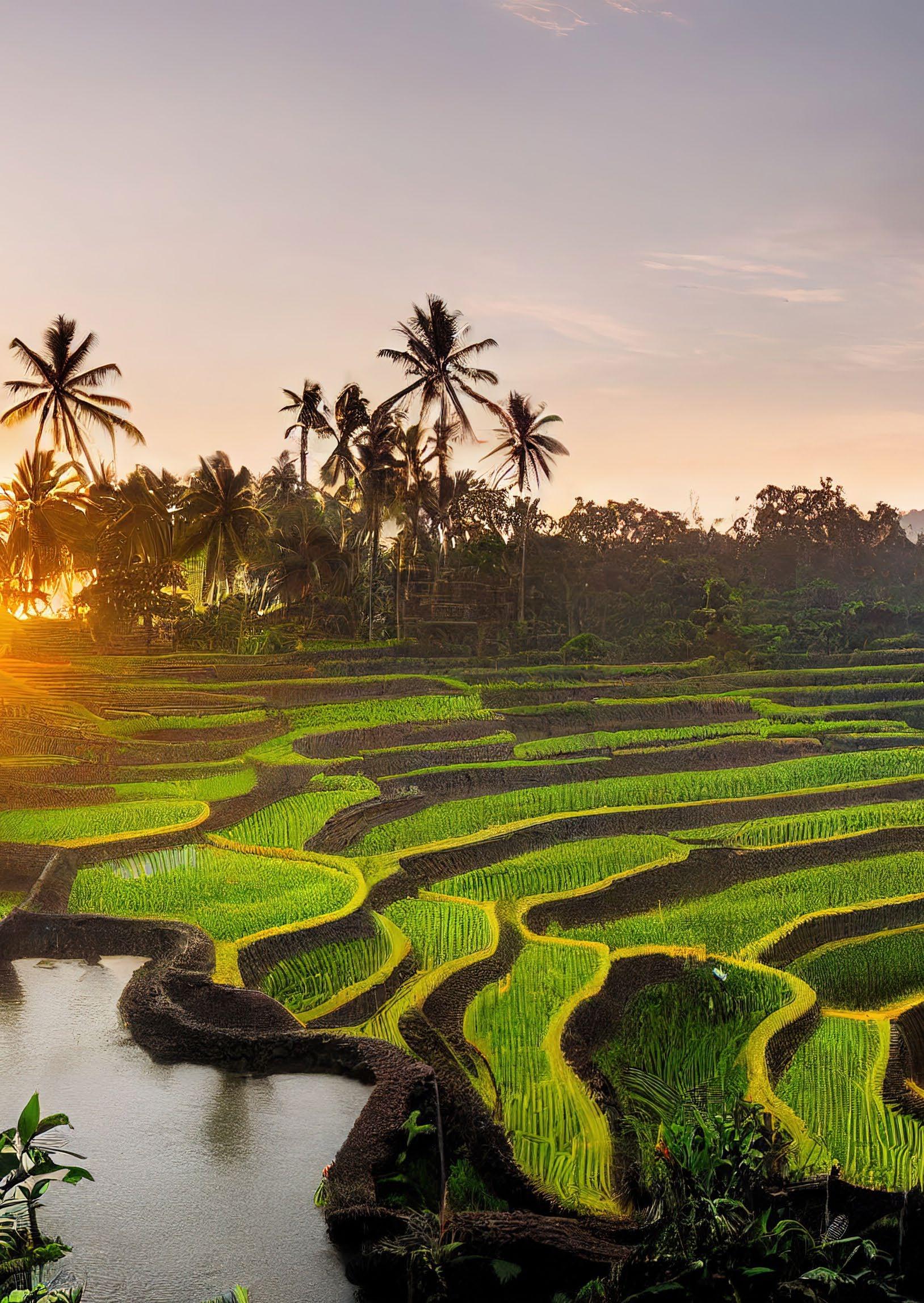
But agriculture’s dependence on water makes it particularly vulnerable to water-related risks. These risks manifest in three main ways: too much (think floods), too little (think droughts) and pollution, all of which are exacerbated by macro forces such as climate change, population growth and aging infrastructure.
But agriculture doesn’t just face water risk, it greatly contributes to the problem as a major user and polluter of water resources in many regions. As such, the sector has a central role to play in addressing these challenges.
The World Resources Institute predicts that we will need to increase food production by 50% by 2050, with global water demand for agriculture estimated to increase by a further 19%. To meet these targets and ensure a secure food supply on a planet of 10 billion people without compromising the rights of other water users, agriculture must start doing more with less. Key to this effort will be the adoption of water technology.
Deploying water technology or ‘watertech’, alongside traditional water management approaches, can dramatically reduce the amount of freshwater used in agriculture. This would ease the pressure on freshwater sources, leaving more for domestic and industrial uses while simultaneously increasing crop yields.
Only 4% of US Farms use drip or precision irrigation (Seametrics)
We need to produce 50% more food by 2050 using the same amount of land (World Resources Institute) 50%

Half of the world's habitable land is used for agriculture (FAO) Agriculture irrigation accounts for 70% of water use worldwide (OECD)
Over half of that water is lost to the environment due to poor irrigation systems and evaporation (High Tide Technologies)
40% all of global food production comes from irrigated agriculture (World Bank)
How thirsty is our food?
Litres of water required to produce one kilogram of the following products:
Globally, about a third of the food produced gets lost or wasted (UNEP)
In the US, agriculture is the main source of pollution in rivers and streams (FAO)
5 January 2023 Issue 4
Sheep/goat
Pig
Chicken meat Eggs Cereals Milk Fruits Vegetables 15,415 9,063 8,763 5,988 4,325 3,265 1,644 1,020 962 322
Bovine meat Nuts
meat
meat
The facts
The water footprint of food
Exclusive Interview: We spoke to Senior Policy Analyst at GRACE Communications Foundation, Kai Olson Sawyer, about the water footprint of food and ways to tackle food-waterenergy nexus challenges

Earth has a lot of water. 70% of the planet’s surface is covered with it, and the US Geological Survey estimates the total volume of water on Earth to be 326 million cubic miles. To put that into perspective, if Earth was the size of a basketball, all its water would fit into a ping pong ball. But while water is clearly abundant, freshwater is not.
Only 2.5% of the world’s water is fresh, and most of it is locked up in ice (68%) or deep underground (30.8%), with just 1.2% found in surface waters like lakes and rivers. Of all the water used globally, 11% goes to domestic use, 19% for industry and 70% for agriculture, according to UNESCO figures.
While the majority of agriculture depends on rainfall, many regions are forced to tap into surface and groundwater supplies for irrigation. 40% of the world’s crops are produced from irrigated agriculture.
The further you narrow down global water use, the more complex it gets. It also becomes clear that agriculture has a disproportionate role in water use and, by extension, tackling water-related challenges.
“You can’t talk about water footprint without talking about the biggest water consumer – food and agriculture,” says Kai Olson-Sawyer, Senior Policy Analyst at New York-based non-profit GRACE Communications Foundation.
Olson-Sawyer has been working on GRACE’s water footprint project for 15 years. Central to the project has been creation of a water calculator that provides evidence-based data on consumer and business-level water footprints. The calculator
is based upon data from the Water Footprint Network.
The water footprint concept was developed by Dutch researcher, Professor Arjen Hoekstra, in 2002, and measures the amount of water used to produce each of the goods and services we use.
“Everything we use has a water footprint,” says Olson-Sawyer. “The footprint of some things, like flushing the toilet, are obvious, but others are more discrete.”
Rather unsurprisingly, diet usually makes up the largest part of a person’s water footprint.
Animal products like meat, dairy and eggs have the highest water footprint of all foods. On average it takes over 15,000 litres of water to produce just 1 kg of steak. Most of the water footprint of meat comes from the water that goes into growing the crops that livestock eat. One Greenpeace report found that 71% of agricultural land in the EU is used to grow crops for livestock feed.
“While there is a lot of public attention around the carbon footprint of animal products, there is less awareness about the water footprint. Even though the concept was introduced around the same time as carbon footprint, it hasn’t gained as much

H 2 O GLOBAL NEWS MAGAZINE January 2023 Issue 4
traction,” says Olson-Sawyer.
GRACE Communications Foundation runs a campaign, Foodprint, that aims to draw attention to the environmental impacts of the food we eat. They recently launched the Water Footprint of Food guide which contains global data on over 100 foods and beverages.

By creating and disseminating information the campaign aims to encourage awareness on waterrelated issues and how they relate to food production. Olson-Sawyer says that this can help foster a public constituency that is more likely to support future-thinking policies on water management and one that doesn’t take water for granted.
“Over my 15 years on this campaign I’ve noticed how the public has become more accepting of the fact that water is used for everything,” he says. “As droughts and water scarcity take hold across the world, the reality of water footprint and its impacts are taking hold in the public imagination – it can’t be ignored.”
However, Olson-Sawyer points out that while consumers are becoming aware of their water footprint, that doesn’t always translate to action. Especially when it comes to food choices.
“While people are receptive to reducing their direct water use (fewer showers, flushing etc.) they tend to be less receptive to changing their food choices even though food tends to make up the biggest proportion of an individual’s water footprint. This is because food is a cultural phenomenon,” he says.
While there is an onus on individuals and businesses to start consuming less water-intensive products like meat and dairy, there is also increasing pressure on farmers to make their operations more water efficient. This pressure comes from market forces, as the price of water starts to rise, but also from competition with other big water users like municipalities and industry as water becomes scarcer.
“Agriculture has a responsibility to use less water, they have no choice. Essentially they won’t be able to operate in many areas unless they adapt to water availability, which in many places is decreasing. It’s a matter of business survival. Water availability has a direct impact on yields,” says Olson-Sawyer.
He continues: “Farmers will have to adapt to water scarcity by doing more with less. This can be achieved through water technologies like smart irrigation systems and by reusing and recycling. But some farmers will also have to face the reality that they might have to change how, when, where and what they grow.”
While there are many water technologies available to farmers, it is important to understand that what works in one place won’t necessarily work in another, says Olson-Sawyer.
For example, it is helpful to review different irrigation systems to understand why drip systems, despite their reputation for water efficiency, aren’t always appropriate for every situation, and why water productivity – doing more with less water – is often more important than which irrigation system a farmer chooses.
The responsibility for water efficiency isn’t simply down to the farmers either. Government has a central role to play in incentivising water-wise agriculture and supporting farmers in the transition.
One example of this comes from the Colorado river basin, which is drying up fast, where farmers are being paid to fallow their fields. Fallowing is where fields are left unplanted, and hence unirrigated, in an effort to save water in times of drought. The crops are then sourced from another location where water is in more plentiful supply, to ensure food security is not affected. Initiatives like these are being funded partly through the Inflation Reduction Act, which has ringfenced $4 billion to help Western states manage water shortages on the Colorado river.
This is just one way that governments can support farmers in adapting to the new water, and climate, reality. Climate change primarily manifests itself in changes in the water cycle. Climate problems and water problems are one in the same. Energy is also highly dependent on water, and is largely responsible for climate change.
Water, food and energy form a nexus at the heart of sustainable development, and there is an increasing realisation that we can only meet the SDGs by implementing solutions that address all three pillars.
continued on page 8 H 2 O GLOBAL NEWS MAGAZINE January 2023 Issue 4
A triple win? Agrivoltiacs - the use of land for both crops and solar power generation – has been shown to significantly reduce water use and increase yields.

As the UN puts it, “efficiency measures along the entire agrifood chain can help save water and energy, such as precision irrigation based on information supplied by water providers, and protection of ecosystems alongside agriculture and energy production.”
Technologies that save water have knock-on positive benefits for agriculture and energy.

“Building climate resilience is also building water resilience and it has to be understood as such,” says Olson-Sawyer. “If you really want to tackle climate change you have to address the problems with water-related risks. Just look at Pakistan, this year they had an incredible drought and then suddenly one third of the country was inundated. Agriculture will have to adapt with this reality.
Water security is food security.”
8 H 2 O GLOBAL NEWS MAGAZINE January 2023 Issue 4
Subirrigation using treated wastewater
We spoke to Ruud Bartholomeus, Chief Science Officer & Principal Scientist Ecohydrology at KWR Water Institute, about how subirrigating crops with treated wastewater can reduce agriculture’s water footprint.

What are some of the water-related challenges facing the agricultural sector?
Agricultural crop yields depend largely on soil moisture conditions in the root zone. Climate change leads to more prolonged drought periods that alternate with more intensive rainfall events. With unaltered water management practices, reduced crop yield due to drought stress will increase.
Both farmers and water management authorities must search for opportunities to manage risks of decreasing crop yields. The good news is that strategies are being developed to control these risks and to secure long-term supplies of freshwater. These include increasing regional self-sufficiency in meeting the demand for freshwater and improving the utilisation of the available water sources.
How do you think the water industry can help agriculture overcome some of these challenges?
Available groundwater sources for irrigation purposes are increasingly under pressure due to regional coexistence of land use functions that depend on groundwater levels or compete for available water. At the same time, treated wastewater from industries and domestic wastewater treatment plants is quickly discharged via surface water towards the sea. Exploitation of these freshwater sources may be an effective strategy to balance regional water supply and agricultural water demand.
Treated wastewater (both from domestic and industrial origin), that is usually discharged from a catchment, can be used for local-scale water supply by subirrigation. The goal of subirrigation is to raise the groundwater level and improve the soil moisture conditions for plant growth through capillary rise.
The use of these treated wastewater for subirrigation purposes may be an effective strategy to contribute to both improved water availability for crops and a reduced pressure on the regional groundwater system.

What water technologies and innovations will be important?
Besides the technology of subirrigation itself, the quality of the water source used for subirrigation is key. In order to use treated wastewater for irrigation in agriculture, further purification of wastewater will be needed.
The development of sewage treatment plants towards so called ‘water factories’ will contribute to the responsible reuse of treated wastewater in agriculture.
How does you organisation help agriculture build resilience?
Water availability for subirrigation, for instance, is generally not limited and could lead to negative impacts to other users of the water system, if not implemented well. We provide analyses of the propagation of (climate) adaptation measures through the hydrological system including a clear visualisation to support water managers. We guide water managers to a responsible implementation of the measures, integrating aspects of water quality, water quantity, water treatment and governance. Additionally, we execute pilot studies to quantify the risks and benefits of adaption measures like water reuse.
9 H 2 O GLOBAL NEWS MAGAZINE January 2023 Issue 4
The role of watertech
If you ask any grower, they will tell you that water is paramount for realising their yield. Water has always been the protagonist for growers.

Unfortunately, however, water has become the antagonist, the story’s disrupter, destroying lives and livelihoods, especially in the Global South. Yet, thanks to recent innovations in hardware, software, and business models, growers of all crops and all geographies can now manage water-related risks in ways their predecessors could only dream of.
In areas where crops are primarily rain-fed, rainwater can be used much more efficiently through relatively low tech capture, storage and reuse technologies. In areas where irrigation is needed (40% of global food production), efficient technologies such as drip irrigation can reduce water consumption by 30-70% and improve yields by 30-200%
There are also technologies readily available today that address flood risks, enable farmers to extract water from alternative sources and help farmers make better decisions and predict future scenarios though data. There are a host of digital technologies that help growers gather more accurate data from the environment and display this data in meaningful ways.
H 2 O GLOBAL NEWS MAGAZINE January 2023 Issue 4
Water innovations for agriculture
One can typically segment watertech for agriculture into three parts:
1. Innovations that help growers to gather more accurate data from the environment, processes, equipment and infrastructure and from the water itself, whether quantity (too much/too little), or quality (not suitable for intended use).

These include: In-situ sensing, IoT, Earth observation (eg: satellite), Connectivity, Analog to digital conversion. The sensing toolbox of innovations that observe, quantify and digitize anything related to water quality and quantity and sends the data to the cloud.
2. Innovations that help growers with data management (scrubbing and normalisation) and to help correlate the datasets and draw inferences. Innovations include: Artificial Intelligence, Machine Learning, Deep Learning, Neural Networks, Bioinformatics, and Modelling/digital twins. Essentially, the data science toolbox of innovations that convert water-related data from disparate sources
3. Innovations that help growers address the challenges of our new climate-change-induced “water reality" in the most effective and cost-efficient way. Innovations include tech that addresses water quality such as purification including membranes, filter media, electrochemistry, biomimicry, etc. This also includes tech that addresses water quantity, such as:
1) Flood protection: earthworks, green infrastructure, etc.
2) New water sources: atmospheric water generation, desalination, reuse, etc. and
3) Efficiency and stewardship including smart monitoring and irrigation tools.
January 2023 Issue 4
Agrinoze develops system for automated, precision irrigation
In November, leaders across government, industry, and civil society met at the The Global Food Security Forum in Bali to assess food security as a global challenge and offer bold solutions for strengthening food systems, securing supply chains, and fighting world hunger. One of the panel speakers was Erez Fait, co-founder and president at Agrinoze, who was there to discuss how the company’s fully automated, real-time system for precision irrigation can help address the global food crisis.
Globally, almost one in ten people don’t have enough food to eat, and 3.1 billion people can’t afford a healthy, nutritious diet. Food prices have risen by about 20% year-on-year over the last decade and fertiliser prices have soared by as much as 300% in some regions. Increasingly severe droughts and water scarcity, exacerbated by climate change, are adding fuel to the fire.
The World Resource Institute estimates that we will have to produce 50% more food by 2050, without using any more land. Reaching this target and achieving global food security will require fundamental, sweeping reforms in the way we produce food and manage the natural environment.
This was the grand challenge guiding the conversation at The Global Food Security Forum. And Erez Fait believes he has a solution.
Fait says that the global agri-food system has been relying on ‘outdated growing methods’ for far too long, methods that waste water, fertiliser and don’t maximise yields per section of land. These techniques
are largely based on assumptions about a plant’s needs, not real-time data. This means farmers are often irrigating at the wrong time, in the wrong place and not in tune with a plant’s physiological needs, he says.
To combat this wasteful use of valuable resources, Agrinoze has developed an end-to-end solution for sustainable drip irrigation.
This is how it works. Real-time sensors are deployed in the soil and root zone of crops. These sensors measure and transmit real-time information on water, soil and climatic conditions to a machine learning algorithm that finds the optimal irrigation point for any field. Then the hardware of the operation, an irrigation control room based at the site, controls the distribution of water and fertiliser across the field via non-drain drip line pipes.

This is what Agrinoze calls ‘water on demand’ irrigation - essentially giving plant’s what they need, when they need it. The method has been tested by over 150 farmers globally. Fait says that time and time again, it has consistently resulted in 300% higher yields using 30-60% less water and, in some cases, no fertiliser whatsoever.
‘ ‘
The irrigation solution has consistently resulted in 300% higher yields using 30-60% less water and, in some cases, no fertiliser whatsoever
12
In California, Agrinoze deployed its solution across almond and grape fields - some of the most waterintensive crops in the world. Over the test period, the fields using Agrinoze were reported to use 65% less water and no fertiliser, with equal if not better yields.
production,” says Fait. “Even though these technologies might seem costly at first glance, farmers make huge savings in the long run. They make more money from increased yields and have lower input costs due to reduced water and fertiliser requirements.”
“Agriculture is undergoing a ‘Digital Revolution’, with immense potential for improving the lives and livelihoods of farmers around the world,” says Riad Meddeb Director at the UNDP Global Centre for Technology, Innovation and Sustainable Development in Singapore.
The UNDP published a report last year Precision Agriculture for Smallholder Farmers detailing the various innovations emerging in the area of digital farming, and how these technologies can support small-scale farming, which produces around one third of the world’s food.
During the fourth quarter of 2020, Agrinoze tested the impact of its precision irrigation on Cassava, as part of a south-east Asia precision irrigation project.

Cassava is a tropical root crop that provides the staple food of an estimated 800 million people worldwide. Fait says that one of the advantages of the Agrinoze solution is that it can manage aggressive, dense planting protocols like those seen in Cassava plantations.
The cassava seedlings were planted with a spacing of 50 cm x 50 cm, twice as dense as traditional spacing. 3 months after planting, several cassava roots were harvested for testing. The roots were measured and tested by a local lab and were found to be suitable for marketing after a third of the typical cycle. Not only were the plants ready much faster, the yields were increased by almost 300% compared to usual methods, with approximately 50% of water and 50% of fertilisers saved.
Whether it’s melons in California, bananas in Israel or corn in South-East Asia, Agrinoze seems to have proven that precision irrigation based upon real-time data doesn’t just improve yield but saves precious water and fertiliser resources as well.


“Precision irrigation dramatically improves efficiency of crops and saves financial costs while increasing
The report recommends that small-scale farmers be supported in digital transformation through funding mechanisms, digital skills training and farmer cooperatives so that solutions like Agrinoze can become scalable across many socio-economic contexts.
Ultimately, digital transformation of agriculture is no longer a nice-to-have but a must have. With support from governments and investors, precision irrigation will no doubt become a staple component of the agri-food system in years to come.
13 January 2023 Issue 4
H 2 O GLOBAL NEWS MAGAZINE
How are technology investors approaching water-tech’s role in global food security?
The food-water nexus is becoming an increasingly actionable opportunity for financial and impact technology investors. While not really referred to as the 'water industry', agriculture is the single biggest user of water, as well as a major contributor to surface water pollution. Financial and impact investors that are able to 'see' water-tech opportunities in agriculture stand to do well in the coming decade.
Yet, there are many venture investors in 'ag-tech' that see limited water-tech deals, and there are 'water-tech' investors who somehow overlook the opportunities in agriculture/aquaculture. Investors who are able to have a foot in both worlds will not only see more deals, but see more quality deals, helping them realise their impact or financial goals.
Corporates one might think of as ‘ag’ actually have significant investments in, and a growing appetite for, innovations that improve efficiencies and manage water-related risks. Examples include: John Deere, Valmont, Lindsay, Franklin Electric, Layne Christensen, and CNH Industrial.

Investors perspective:
Julie Martin, Director at Grow Forward

What are some of the water-related challenges facing the agricultural sector?
With over 8 billion people on the planet, our food requirements have increased dramatically in order to feed our growing population. For example, we use over 2 quadrillion gallons of water each year for our agriculture system. The Great Lakes have 6 quadrillion gallons of water in total, but as our population grows, a higher percentage of our water will be needed for agriculture.
How does your company encourage sustainable agriculture?
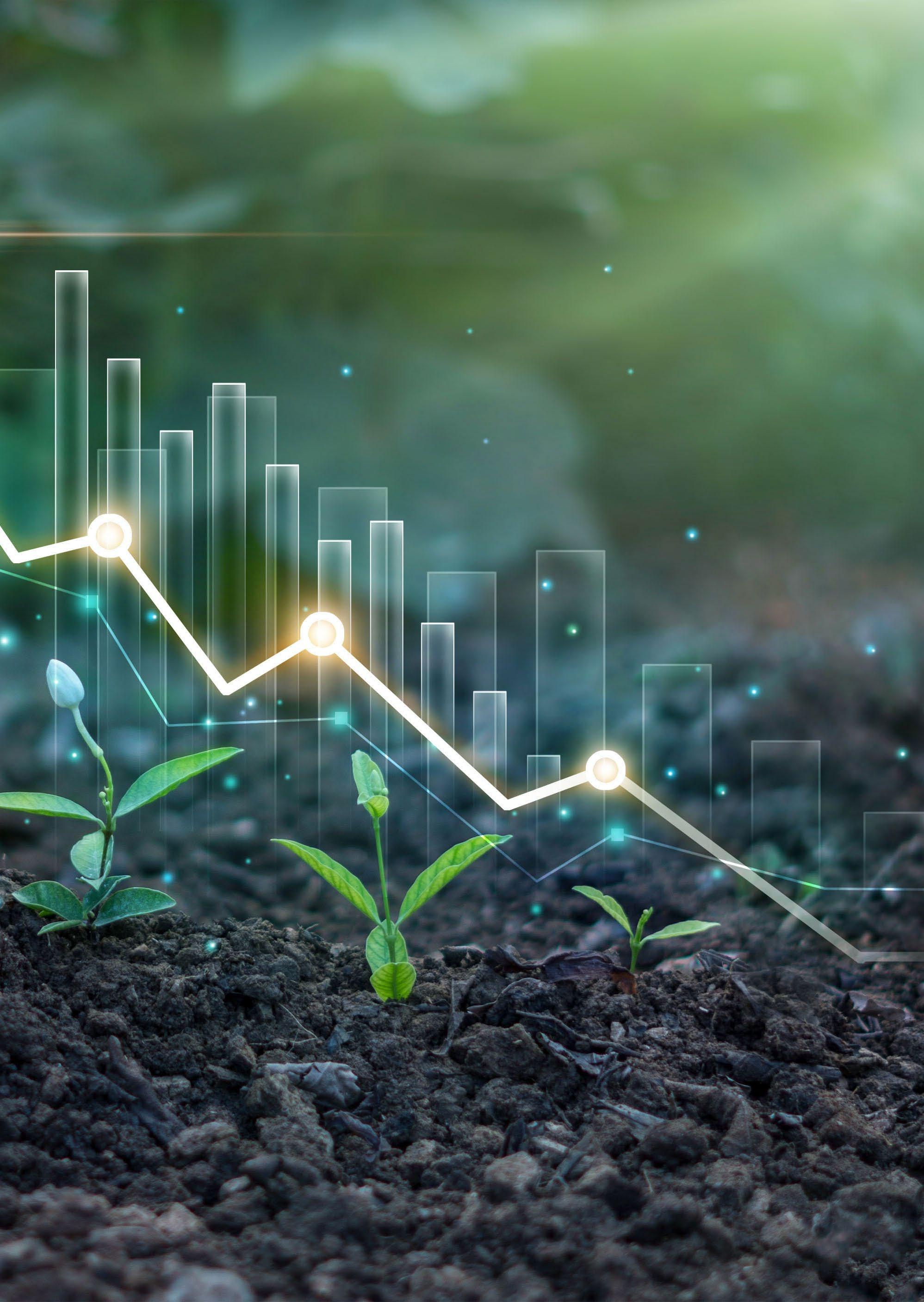
We look at technologies and food production systems that are efficient with their water usage and help protect our most valuable asset.
For example, our portfolio company, LocalCoho, uses a recirculating aquaculture system where water is filtered and recycled 9 times before being discharged.
There are a number of ways in which we can get more efficient with our water. To start, we need to ensure that the usage of water is maximised. For example, growing crops in a greenhouse can save over 90% of the water required for growing as compared to producing crops in outdoor soil.
We think technology will be instrumental in transforming how we can produce food for a fraction of the water of traditional farming and will be very valuable moving forward.
What water technologies and innovations do you think will be important?
Producing the proteins and foods that we love takes a lot of water.
Dairy cattle require over 40 gallons per day, cattle for beef is over 20 gallons per day, and pigs require over 5 gallons per day.
The world’s favourite beverage, coffee, requires over 37 gallons to make the beans for one cup.
These are massive numbers that put into perspective just how valuable water will be In the future.
With a growing population, technology that can reuse water from one industry and provide value for another will be leaders in the 21st century. One area that we are really excited about is the technology to utilise animal waste as a valuable organic fertiliser for the agriculture sector.
Another portfolio company, InnovaFeed, utilises wet byproducts from large agriculture production to feed its insects for protein. The insect frass (waste) becomes an organic fertiliser that can provide nutrition to the local farmers’ crops.
How can the investment community encourage the uptake of water-wise business practices?
Water has been an underinvested asset for a long time. Historically, investors have focused on other hard assets because the supply of water has never been in doubt and there was minimal perceived value in the asset. Now that supply has become more constrained, as evidenced by what is happening on the West Coast of the US, we think water tech and investments that can increase the efficiency of water usage will have a lot of value in the decades to come.
Any other thoughts?
Control of water is heavily regulated as states hold their water rights very closely. Relative to all other assets that have become dominated by the private sector, water is still widely controlled by public municipal districts. That presents some opportunity for the private sector to potentially disrupt the current infrastructure with more efficient systems than what we are currently working with.
How do you think the water industry can help agriculture overcomesome of these challenges?
Constellr pioneers ‘world’s
first’
satellite-based

water monitoring system for crops
For millennia, farmers have inspected the health of their crops manually. They walk through their fields and check the appearance and growth of their crops and look for signs of stress, pests and diseases and weed competition. As you can imagine, this process is arduous and often inaccurate, especially over large areas. And it relies on something that most farmers don’t have much of - time.
But this could all be changing with the help of the world’s first globally scalable crop water monitoring system.
The technology is the brainchild of constellr, a German deep-tech startup that operates at the interface of Earth Observation and agriculture. A spin-off of the Fraunhofer, Europe’s largest organisation for applied science, constellr’s tech comprises constellations of microsatellites, equipped with thermal infrared and hyperspectral imaging instruments, that gather daily, global land surface temperature data.
This data is used to compile coloured land surface temperature heatmaps that display plant stress and water availability at sub-field level. This data is used to provide insights into crop health and water stress, and deliver precise and plot-level water monitoring and yield forecasting.
Constellr says its technology can identify changes in crop health days to weeks before these signs become visible, enabling farmers to react early to, and mitigate for, potential crop risks and losses.
This advanced warning, which the firm says differentiates it from existing satellites, helps reduce the risk of crop failure or damage, allowing more accurate crop yield forecasting.
“This transparent and predictive crop stress data has a significant positive impact across food supply chains and resulting food and water security,” the startup said in a press statement.
Globally, more than 70% of freshwater is used for agriculture according to the Food and Agriculture Organization of the United Nations (FAO), and a whopping 60% of that goes to waste due to
16 H 2 O GLOBAL NEWS MAGAZINE January 2023 Issue 4
inefficient irrigation and planting methods. The UN also estimates that 50% more food will be needed by the Earth’s population by 2050, leading to a massive increase of freshwater demand for irrigation.
Currently, a lack of transparent data on crop stress at a macro and field level has a material impact across supply chains, with unmitigated water stress causing major crop yield losses.
constellr’s satellite images provide highprecision data that can be used, for example, to determine the water requirements of crops that have already been cultivated or predict an impending drought. This gives farmers time to implement mitigation measures such as targeted irrigation. Through early detection of water stress, constellr believes it can contribute to enhanced yields, reduced operating costs and optimised resource and supply chain management.
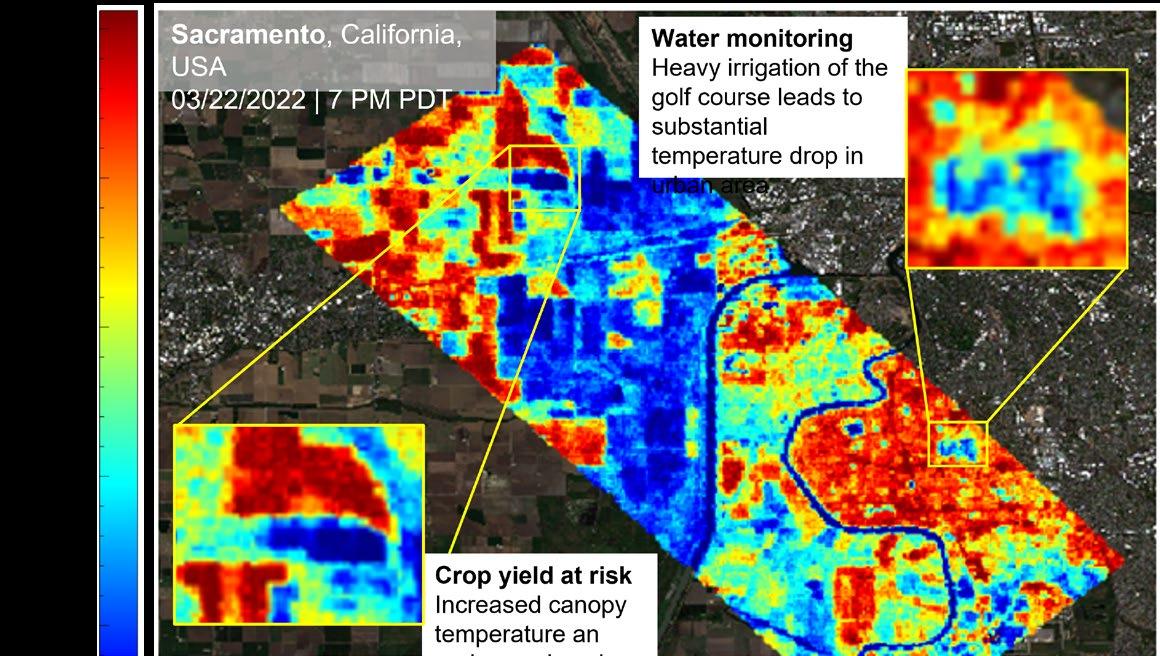
Within five years, the startup looks to help save 60 billion tons of water and avoid 14 megatons of CO2 being emitted while generating billions of euros in gross benefits for farmers.
And they’re not the only ones who see the potential.
In November, constellr secured $10m in seed funding which it will use to develop its first two satellites, conclude its existing pilot programs and develop its processing platform.
“The team has worked relentlessly on all fronts, removing obstacle after obstacle, getting a first camera in space and pilot customers onboard,” said Max Gulde, constellr co-founder and CEO, when the funding was announced in November.
Gulde continued: “And now, we are incredibly proud to partner with what will become our mission control: Lakestar, VSquared, FTTF and IQT for deep tech, Amathaon Capital, Natural Ventures, EIT Food and Next Humanity for agriculture, and Seraphim, OHB Venture Capital and Spacebel for space. Together, we just ignited the second stage towards a global water monitoring system.”
One of the main investors, Abu Dhabi-based Natural Ventures, is an impact-driven fund that invests across the water – energy– food nexus globally.
“Food is intrinsically linked to the water cycle. constellr’s potential to determine the water need and water availability across every field on the globe, every single day is a game changer,” said Maarten ter Keurst, Managing Partner at Natural Ventures,
who has years of experience in water-related investing.
Natural Ventures was formed to fund solutions that tackle one or more global food-water-energy nexus challenges. “That is one of the reasons why you are likely to see us investing in technologies which have an application in water, but do not only (or even mostly) operate in water,” the firm says on their website.
“Being able to irrigate accurately boosts efficiency and often increases yield, improving food and water security simultaneously,” Ian Summerfield, Strategic Partner at Natural Ventures, told H2O Global News.
Summerfield has 35 years of experience in the farming production and food processing industries, and says he sees ‘enormous potential’ in constellr’s technology and its ability to help to address the impact of climate change on the world’s water system.
He continued: “The [constellr] solution isn’t just for farmers, it can be used to shape government policies and predict risk for agricultural insurers.
“We’re already facing food shortages globally, and I truly believe that watertech has a crucial role to play in improving the efficiency and sustainability of agriculture.”
17 H 2 O GLOBAL NEWS MAGAZINE January 2023 Issue 4
Constellr creates coloured land surface temperature heatmaps that display plant stress and water availability at sub-field level
Leveraging finance for climate-smart agriculture
interview: H2O Global News editor Siôn Geschwindt spoke with AQUAOSO CEO Christopher Peacock about the climate challenge, the importance of data and how to build water resilience in the agricultural sector.
Agriculture accounts for approximately 70% of all freshwater withdrawals globally.
So, it goes without saying that water forms the backbone of the agricultural economy, and our survival.
Yet, climate change is leading to more frequent and intense droughts, floods, and wildfires, posing a risk to agricultural supply chains and the livelihoods of farmers.
These risks exert an increasing influence on the approval or refusal of agricultural loans – which many farmers depend on.
As water becomes scarcer, agricultural lenders are often unsure of how this will affect their portfolio.
The result? Without a clear idea of what constitutes a sound investment, many farmers are getting refused loans because banks are unsure about the current and future risks that climate-related water shortages present.
‘Water risk is business risk’
Flooding, water scarcity, and brine intrusion are all climate-related water risks that can lay a direct financial burden on farmers.
For instance, if a farmer runs out of water and their
crop fails, they might not be able to pay back loans. Over the longer term, their land might lose value too.
Moreover, for farmers to adapt to climate change they must adopt new techniques and technologies and upgrade their infrastructure. But this costs money.
“In many cases, an obstacle to better water management can be a lack of finance,” said CEO of AQUAOSO, Christopher Peacock. “A lack of capital can delay planting and harvesting decisions, potentially disrupting the entire supply chain.

“Lenders must pay closer attention to water security and factors that can determine the overall risk of a loan.
“Although climate change has long been on lenders’ minds, water risk is now a major concern as well.”
AQUAOSO is a US-based climate fintech company that use big data, analytics and remote sensing to better understand water risk.
When agricultural lenders are unsure of the waterrelated risks of a farming operation, they enlist the help of AQUAOSO to give them insights into whether or not that farm is a sound investment.
They run climate analytics against a bank’s entire loan portfolio, reporting on current risks and scenario testing to predict future ones.
18
Exclusive
What about the farmers?
It would be easy to assume that giving lenders a clearer picture of water risk would lead to less loans being handed out. But it’s not that simple.
“Helping lenders understand the risk can actually improve the loan approval rate,” said Peacock. He added: “We believe that financial institutions have a major role to play in building resilient agricultural and food systems, and our risk analysis helps these institutions meet the needs of our farmers.”
As the sector faces a growing number of challenges, robust financial investments are needed more than ever to support the global food system.
But these investments should also be sustainable. As lenders understand water risks more clearly, they will tend to lean toward those farms practicing sustainable water management.
However, farmers who are less financial capable and lack the knowledge risk getting left behind.
To avoid this, AQUAOSO suggests lenders work with farmers who may not initially be granted loans, stewarding them as they work on their water management practices.
Then once they’ve improved their practices and lowered their water risk, they’ll be able to qualify for loans.
For this to work, lenders will have to leverage their influence in the agricultural sector to encourage a shift to water resilience and place water firmly at the centre of their business ethos.
Ways forward
To help ease this transition, the Environmental Defence Fund recommends that banks develop lending programs and products to support farmers in transitioning to conservation practices that build resilience. For instance, through multi-year loan terms and adjusted repayment periods — and incorporate data on the benefits of conservation practices in credit rating processes.
While some climate risks are difficult to anticipate, there are growing opportunities and resources available for farmers and agricultural lenders to better understand their vulnerabilities related to climate change — and take steps to build resilience.
Assessing risk at the lending institution level with the assistance of companies such as AQUAOSO is helping lenders adopt and implement strategies to monitor and mitigate climate risk.
To bridge the critical capital and skills gaps that exist, the World Bank also recommends leveraging both public and private capital for climate-smart agriculture investments and providing technical assistance to lenders and borrowers alike.
This includes densifying key entry points, for directing climate finance into agriculture and linking financial institutions, smallholders and agricultural SMEs.
The Green Finance Platform also emphasises the role of insurance companies in helping to manage climate risks by allowing more flexible index payouts based on changes such as rainfall over time or average yield losses, rather than larger pay-outs triggered by crop failure.
Toward climate-smart agriculture
According to the Food and Agricultural Organisation of the United Nations (FAO), climate-smart agriculture is an approach that helps guide actions to transform agricultural systems towards climate resilient practices.
This approach to food production looks to do more with less. To sustainably increase agricultural productivity while building resilience to climate change and reducing carbon emissions
Achieving climate-smart agriculture will require targeted investment, financial backing and strong partnerships that promote sustainable practices and support farmers – particularly small-scale, lowincome operations.
The good news is that there is an upward trend in sustainable agriculture investment, which has grown 32.5% annually since 2013.
The bad news is that as the climate crisis worsens, many farmers are struggling to make ends meet and investors are scrambling to deal with investment doubt and insecurity.
Data and collaboration will be key to overcoming these hurdles. Data to inform smart decisionmaking and situational awareness, and collaboration between lenders, borrowers, and other stakeholders to build a water resilient sector fit for the future.
19 H 2 O GLOBAL NEWS MAGAZINE January 2023 Issue 4
Smart irrigation technology: Less water, less cost
We caught up with Devon Wright, CEO at Lumo, to find out more about their smart irrigation technology that saves water, improves crop quality and reduces costs.


What are some of the water-related challenges facing the agricultural sector?
Irrigation is the largest user of freshwater globally. This also makes it one of the largest energy users, and one of the largest employers. So anything that challenges water availability has a disproportionate impact on water, energy and labor costs for our growers.
A changing climate is shifting rain patterns and increasing drought intensity, all while growing populations increase demand for our limited water supplies. This is having a major impact on water security and increased reporting requirements for our growers as more people fight for an increasingly variable supply of water.
How do you think the water industry can help agriculture overcome some of these challenges?
Innovation and investment.
Until now, the solution has always been to seek new water sources, but that is no longer possible. We need to find new ways to use our limited resources more effectively.
Farmers need better tools to effectively track, manage, or optimise their water consumption.
This has to be led with significant investment in Smart Irrigation Infrastructure. Smart pumps like VFDs, smart valves like Lumo, and AI to optimise irrigation configurations and times of day.
Even small improvements in irrigation efficiency can
lead to a huge savings in water, power and labor.
All of this lays the foundation for water reporting and transparency that will help growers conduct water trading, voluntary sharing agreements and pricing innovations that optimise water resources across irrigation districts.
What water technologies and innovations will be important?
Technologies that provide accountability for water consumption. Like Internet-of-Things (IoT) smart valves, pressure sensors, flow meters & pumps. These have two huge impacts: one for the farmer and one for society.
Tools that can give farmers increased precision while taking care to minimise power, water and labor use will hugely improve farming efficiency (especially water efficiency).
How does your organisation help reduce the impact of agriculture on water supplies?
Lumo helps farmers reduce water consumption by 30-50%. We do this by facilitating night time irrigation, significantly reducing over watering caused by human error, and detecting leaks or breaks in irrigation lines in real-time. We can also help farmers collect detailed records on water use which can be used for water rights reporting, trading and proof-of-compliance for voluntary sharing agreements.
20 H 2 O GLOBAL NEWS MAGAZINE January 2023 Issue 4
Ensuring irrigation water is safe and fit-for-purpose
We caught up with Andrew Engali, Chief Strategy Officer at Kando, to find out more about how their big data solutions can help monitor pathogens and pollutants in irrigation water.

What are some of the water-related challenges facing the agricultural sector?
As a watertech company founded and headquartered in Israel, Kando has extensive experience in dealing with the water-related challenges faced by the agricultural sector.
Israel’s agricultural sector is dependent on irrigation, as summers are characterised by a 6-7 month period with minimal or no rainfall. Effluents make up about half of this irrigation water.
However, data about pathogens and organic pollutants, such as drug or chemical residues, is not being routinely monitored, and so pollutants may be absorbed by crops or seep into groundwater.
In parallel, existing infrastructures for treating wastewater are often unable to respond to particularly high water loads, especially during periods of heavy rainfall.
How do you think the water industry can help agriculture overcome some of these challenges?
The lessons Kando has learned in Israel are applicable worldwide, especially as many foodproducing areas are becoming drier.
The water industry can start to overcome these challenges by treating wastewater as a resource.
Harnessing wastewater data can help agricultural stakeholders build up a better understanding of what’s going on underground, with the resulting insights set to have a game-changing impact on water quality.
What water technologies and innovations will be important?
A wide range of innovations constitute the modern water technology suite. These technologies have three objectives at their heart: saving water, recycling or reusing water, and treating contaminated water.
Advances in AI and IoT technologies now allow policymakers and businesses to build up a real-time understanding of the precise chemical makeup of our water flow, generating faster and more accurate insights than ever before.
How does your organisation help reduce the impact of agriculture on water supplies?
In recent years, treated wastewater has started to make up an increasing percentage of the water used in agriculture – even in areas where overall water consumption has been in decline.
Kando has implemented its pioneering, datapowered wastewater intelligence solution in partnership with numerous local authorities in the US, Europe, and beyond.
By detecting events in wastewater, Kando’s solution locates polluting factors and thus helps to improve the quality of wastewater.
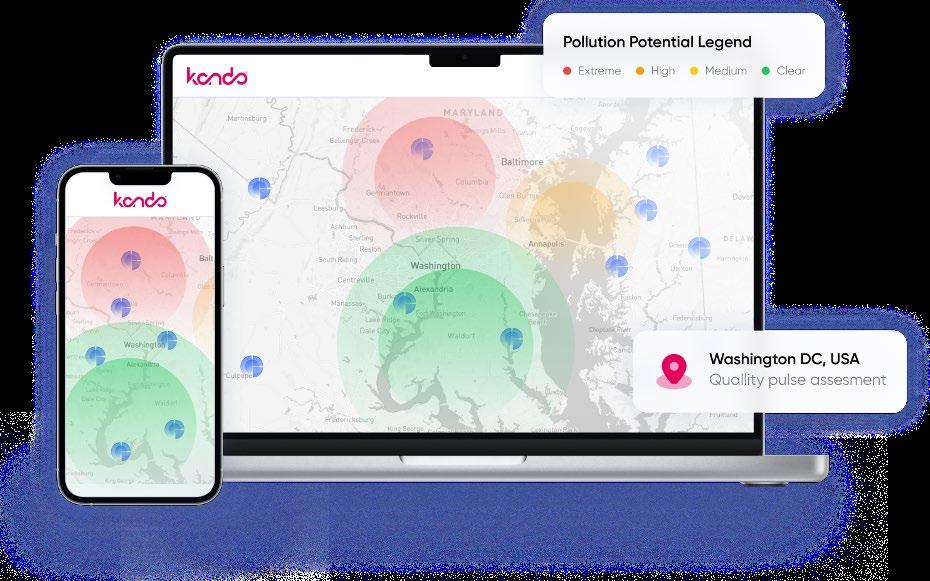
21 H 2 O GLOBAL NEWS MAGAZINE January 2023 Issue 4
Remote metering for the agricultural sector
What water technologies and innovations can help agriculture overcome some of its greatest challenges?
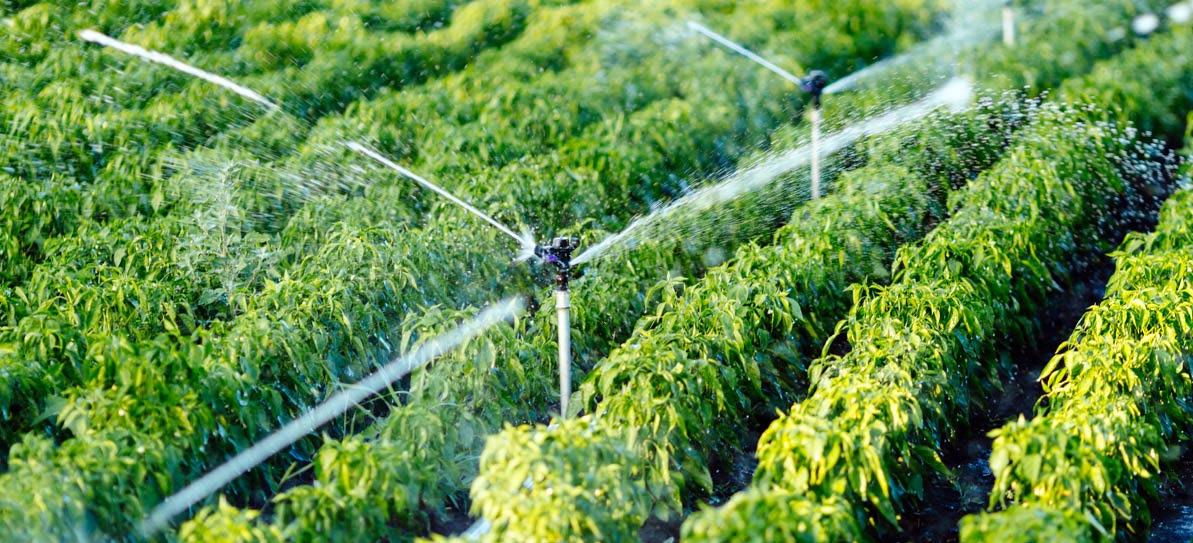
Remote metering will become increasing popular in the agricultural sector. As in the area of drinking water, remote metering will improve the management of the billing cycle, including meter reading, billing and payment collection and, through real-time reading of subscriber meters and the application of advanced algorithms, farmers will be able to monitor and detect leaks and fraud and forecast demand.
Smart irrigation will also be important, as more and more irrigation associations will choose to water their land according to the real needs of their crops and the moisture content of the soil. Based on the reading of moisture sensors installed in the field and the information on climate conditions, weather forecast, irrigation type, soil characteristics and crop type, in order to calculate the water balance, technological solutions will indicate when and how much water should be used to optimise water resources and thus promote environmental sustainability.
Remote sensing and satellite imagery will provide increasingly complex information on the state of the crops and lands. A further step forward is the automatic adjustment of irrigation schedules through the application of algorithms, taking into account the water needs of the crop, the moisture content of the soil and the weather forecast.
The use of software platforms that integrate realtime information to improve decision-making and help asset monitoring and consumption control will also become commonplace.
How does your organisation help reduce the impact of agriculture on water supplies?
The GoAigua AgroTwin solution is a modular software platform that processes different data sources, regardless of vendors or technology. The modules include operations and monitoring, remote reading, leaks, billing, work orders and asset management, and together form a smart, datadriven decision-making system.
The platform is made up of an integrated environment for monitoring and managing customer-operated infrastructures encompassing all the areas that irrigation associations have to manage. This one-stop shop helps to improve water and energy efficiency, reduce operating and maintenance costs, and enhance environmental sustainability.
GoAigua’s technology provides a solution to combat the impact that the increase in global food demand poses to the environment, while boosting farming productivity.

How do you think farmers will manage water in the future?
One of the key developments in the farming industry will come from improvements in the hydraulic and operational efficiency of the network thanks to the installation of sensors and of remote meters for farmers.
Furthermore, smart irrigation, based on the real needs of crops, the moisture content of the soil and weather forecasts, will become more widespread thanks to advances in remote sensing and sensor technology.
In this area, technological solutions and automatic irrigation rescheduling will optimise water consumption and enhance environmental sustainability by reducing the farming industry’s water and carbon footprints.
22
Begoña Tarrazona, Irrigation Specialist at Idrica, discusses some of the technology trends that can boost water efficiency in the agricultural sector.
Q&A with Duperon
Steve Macomber Business Development Manager at Duperon

Tell us more about Duperon.
Duperon is the leader in simple, adaptive screening technologies as a foundation for liquid/ solids separation. We provide solutions for coarse screening, fine screening, low flow screening, ultra screening, washing, compacting, and conveying.
We look to our customers to measure our own performance, and we are committed to continually introducing innovative products for preliminary treatment and management of water and water resources. We serve customers, groups and associations that share our commitment to the global goal of making a difference: for people, for water, for the planet. Duperon technologies are designed and manufactured in Saginaw, Michigan and installed in North America and internationally.
What are some of the water-related challenges facing the agricultural sector?
In many areas, increasing water scarcity due to climate change and population expansion is placing the demand for water in the agricultural sector in direct competition with urban needs, ecosystem needs, and recreational needs. Irrigated land produces more food per acre than non-irrigated land, and there is pressure to increase production further.
How do you think the water industry can help agriculture overcome some of these challenges?
Water reclamation, commonly referred to as “water reuse,” will likely play a major role in the future of our water supply. Within the municipal and industrial sectors, the practice reduces demand for potable water and can reduce interbasin transfer losses. Many areas are also successfully injecting reclaimed water directly into aquifers, which can reduce saltwater intrusion and help protect underground water sources.
What water technologies and innovations will be important?
To protect public health, it is critical to remove contaminants from wastewater prior to agricultural reuse. Therefore, advanced tertiary treatment of wastewater and Class A biosolids will be a major focus for the industry in coming years.
How does your organisation help reduce the impact of agriculture on water supplies?
Duperon equipment is the foundation of a robust primary treatment process. Our technology removes inert material that could jeopardize downstream processes, making the final solid and liquid train products unfit for agricultural water reuse. A cleaner primary process supports downstream water reclamation unit processes.
How does you organisation help agriculture build resilience?
Supporting water reclamation reliability and acceptance builds resilience by providing new irrigation and fertilizer sources, and by reducing demand on other groundwater and surface water sources.
23 H 2 O GLOBAL NEWS MAGAZINE January 2023 Issue 4
Global events
Wastewater Conference 2023
Date: 25th - 26th January 2023
Location: Birmingham, UK
Join WRc’s wastewater infrastructure experts in Birmingham on 25th - 26th January 2023 at WWT Wastewater Conference 2023.
World Water Tech Summit 2023
Date: 21st - 22nd February 2023
Location: London, UK
A two-day event where 400+ water utilities, regulators, engineering firms, technology giants, start-ups, and investors explore how to build energy efficiency and climate resiliency.


Future of Utilities: Water 2023
Date: 20th March 2023
Location: London, UK
Water returns with a jam-packed day of fresh ideas, top-level speakers and opportunities to network with other innovators.
SWAN 13th Annual Conference
Date: 9th - 11th May 2023
Location: Glasgow, Scotland, UK
The SWAN 13th Annual Conference will be held May 9-11, 2023 at the Crowne Plaza Glasgow in Scotland. How do we move the industry from early
24 H 2 O GLOBAL NEWS MAGAZINE January 2023 Issue 4
Ad Index Thank you to our advertisers: IFC Mazarine Ventures 2 iVapps 8 H2O Global News IBC Blue Manta Media OBC Future Water Association FOLLOW H2O ON @h2oglobalnews Subscribe to our weekly newsletter here!
adopters to the early majority? Our theme, “Making Smart Water Mainstream” will focus on the practical, “how to” value of taking the smart water journey by navigating through current, global utility challenges.
Utility Week Live 2023
Date: 16th - 17th May 2023
Location: Birmingham, UK
Utility Week Live, the UK’s only pan-utility exhibition, will return to Birmingham’s NEC on 16 - 17 May 2023 to drive collaborative innovation, and support strategic, technical, and operational professionals in solving critical business challenges.
WEF/IWA Innovations in Process Engineering: Sustainable Water Resource Recovery
Date: 6th - 9th June 2023
Location: Portland, Oregon, USA
The Innovations in Process Engineering: Sustainable Water Resource Recovery Conference is designed to serve as a cutting-edge showcase for the introduction and discussion of innovations and new practices for water resource recovery facilities. The conference will focus on broad topical coverage in terms of treatment efficacy, efficiency, and enhancements as well as resource recovery and improved understanding and operation through monitoring tools and advanced data analytics.
ACE 23
Date: 11th - 14th June 2023
Location: Toronto, Canada
ACE, where the water community comes together to learn, connect, and be inspired to solve global water challenges. There is a priceless value in connecting with your peers in person. A palpable energy comes from the exciting innovation in the exhibit hall, and sessions pulsate with conversations that are a catalyst for change. Regardless of where you are in your career, there is something for everyone at ACE.
European Wastewater Management Conference & Exhibition
Date: 4th - 5th July, 2023
Location: Manchester, UK
The EWWM Conference provides an essential annual update on the latest innovations, best practice, cutting-edge technology and research in the wastewater sector.
WEFTEC 2023
Date: 30th September - 4th October, 2023
Location: Chicago, Illinois
There is no better place than WEFTEC to meet water professionals from around the world and experience first-hand the best in water quality education, leading experts, the latest technology and trends, and proven solutions.
Water, Wastewater & Environmental Monitoring
Date: 9th - 10th October, 2023
Location: NEC, Birmingham, UK
WWEM the water, wastewater and environmental monitoring event is a virtual and in person event that focuses on instrumentation and services for water and wastewater process monitoring. Wwem offers a technical program aimed at keeping you up to date with the latest trends, regulations, methods, techniques and technologies.
Furthermore, you can also network with all industry stakeholders including suppliers, regulators and end-users from industry that need to test, monitor and analyse water and wastewater.Education, leading experts, the latest technology and trends, and proven solutions.
25 H 2 O GLOBAL NEWS MAGAZINE January 2023 Issue 4
FREE Website health check for H2O Global News readers
Competitors outranking you and you don’t know why?

Learn
SITE AUDIT
A complete health check of your website; any errors or warnings to be fixed to provide quick wins for increasing visibility.
SEARCH RESULTS
Find out where you are currently ranking vs your competitors and with which keywords.
SEO & WEBSITE PERFORMANCE
We provide a complete overview from loading speed to checking if your website is mobile-friendly.




SEO STRATEGY
We provide 5 top tips to improve your rankings and special discounts to engage Blue Manta Media.
26 EVENTS
Blue Manta hello@bluemantamedia.com
how to improve user experience and search rankings with Blue Manta Media, Contact us today...
Future Water Association is a modern, innovative and dynamic membership organisation that inspires, supports and leads the water supply chain. We want to make a difference and aim to shape the future of the water sector by:

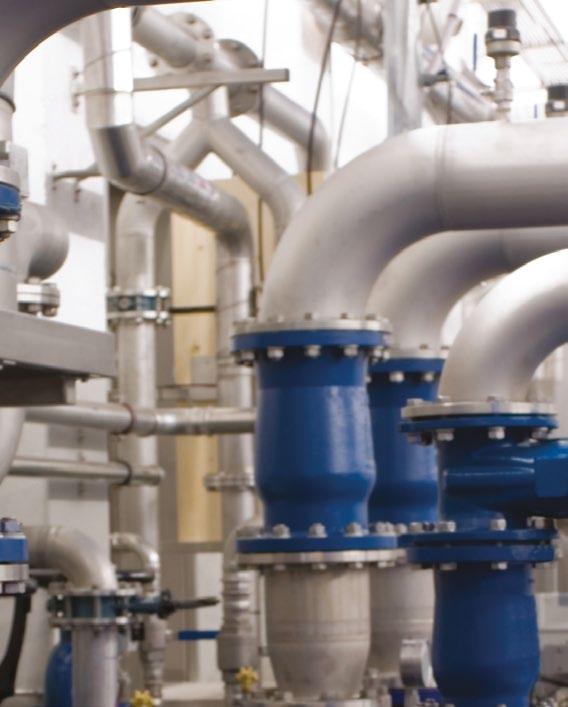
Informing Innovating Influencing

encourage and support innovation through Water Dragons and delivering the ‘Innovating the Future’ roadmap, where creativity has a route to market.
will influence and inspire the supply chain to develop innovative solutions and new ways of thinking to shape the future of the water sector.

We
Membership provides you with a cost effective way for you to be better connected, better informed and more empowered
work, grow your business and network within the water sector.
We will strive to keep our members informed about opportunities, the regulators about challenges and Government about policy direction.
will
We
to win
Don’t look backwards, look to the future with the Future Water Association Join us today! Call us today on 01926 513774 or visit www.futurewaterassociation.com
“If
you
keep doing things the same way you’re going to get the same results”



































































